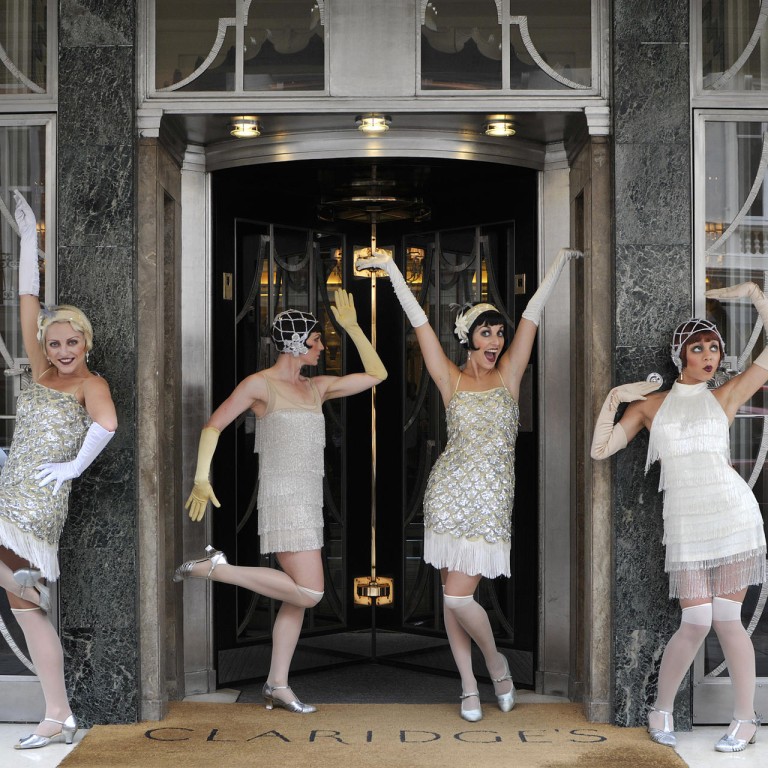The Great Gatsby is inspiring luxury sector to satisfy a global fascination with art deco

'Celebrating flamboyance, frivolity and forward-thinking, the art-deco period is one of the most exciting eras of design'
skirts and cloche hats to sacque suits and straw fedoras, the art-deco movement of the 1920s and '30s was the epitome of style and sophistication. Much more than just a period-clothing trend, however, it came to represent a daring mix of glamour, excess and functionality that radically influenced all aspects of design.
Given its hedonistic nature and connection with the decadent lifestyle, it's little wonder that art deco has enjoyed a timeless appeal. With Baz Luhrmann's blockbuster, , hitting cinemas late last year, art deco is now more prevalent than ever, with a growing range of luxury hotels, retailers and designers trying to satisfy a global fascination. If it never really went away, then art deco is now back with a vengeance.
"Celebrating flamboyance, frivolity and forward-thinking, the art-deco period is one of the most exciting eras of design, mixing the natural forms of art nouveau with the modern influences of cubism and futurism," says Thomas Kochs, general manager of Claridge's hotel in London. "For me, the bold lines and sweeping curves of the style make it particularly attractive."
While art deco was born in Paris in the 1920s, it didn't take long for its influence to spread to London. For many, it was simply about letting off steam after the doom and deprivations of the early 20th century. Today, the British capital is littered with examples of iconic period architecture, while sumptuous hotels, such as Claridge's and the recently renovated Savoy, sit at the heart of a growing art-deco trend.

"With Gatsby fever currently sweeping the nation, the hotel recently introduced Charleston classes and architecture tours have really complemented the whole art-deco experience. When you can finish your day off with a gin sling or two in The Fumoir bar, the roaring '20s really comes alive." After a US$360 million revamp, the reopening of The Savoy hotel in 2010 has given London's love of all things deco a shot in the arm. Highlights include a new crystal fountain by Lalique in the entrance, the Thames Foyer's stunning glass dome, and the glamorous Beaufort Bar, a temple to art-deco excess with its black velvet and huge quantities of gold leaf.
Savoy guests should be sure to dine at Kaspar's, a seafood restaurant which opened in May. "The new eatery is pure art-deco theatre," says aficionado Paul Nicholls-Whiteman. "I was dazzled by the cut glass, chequer-board marble floor and the central circular bar heaped with oysters and shellfish. Enjoy panoramic views of the River Thames while you revel in the sheer opulence."
Nicholls-Whiteman is not surprised by art deco's growing popularity. "Yes, of course, period productions such as and have inspired some people," he says. "But I think it goes deeper than that. Art deco is about liberation - freedom to express emotion and good taste, to have fun, to be optimistic. After the frugal times of the recent global recession, it was only natural that people wanted to put a little pizzazz back into their lives."
On the other side of the world to London, it was the forces of nature which led to the development of another increasingly popular destination for art-deco lovers. After a massive earthquake and subsequent fire destroyed the New Zealand town of Napier in 1931, talented local architects jumped at the chance to rebuild the downtown area in contemporary architectural style.
"It wasn't until 2001 that visiting architectural historians pointed out that instead of the three buildings which survived the earthquake, which we thought constituted our heritage, it was the 140 buildings of the 1920s and 1930s that were the real treasures," explains Sally Jackson, general manager of Napier's Art Deco Trust.